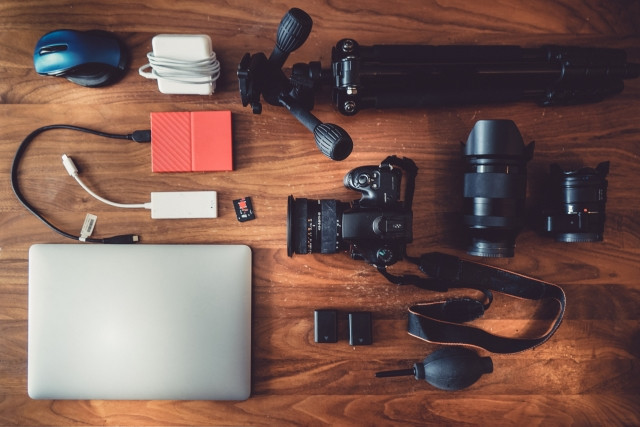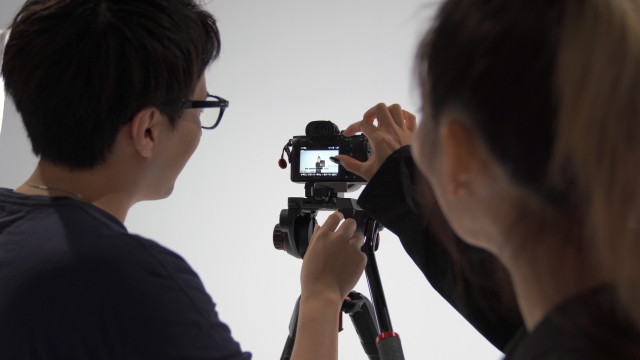Photography has come a long way in Japan’s history and has helped to capture crucial moments in history to be preserved forever. Photography can be a hobby, made possible by Japan’s innovative cameras, but it can also be pursued as a full-time career by the bold and talented in Japan!
Table of Contents
- History of Photography in Japan
- Building a photography career in Japan
- Making a Living as Photographer in Japan
- Summary
Photography is part of the Japanese lifestyle and exceeds conventional arts. In fact, many of the world's leading cameras are made in Japan. Like other countries, Japan is constantly innovating and introducing new products in the digital media. It has revolutionized the face of digital photography worldwide.
 Are you having any issues with job-hunting in Japan?
Are you having any issues with job-hunting in Japan?
History of Photography in Japan

The first camera was introduced in Japan in 1848 by a Dutch importer, one of the few nationalities allowed to have trading relations with Japan during the Sakoku era when Japan closed its doors to the world. Yet it was only in 1857 that a Japanese owner of the camera, Shimazu Nariakira, a daimyō or a feudal lord, became the first subject of a photograph taken by Ichiki Shirō using the old, large and heavy daguerreotype camera. That picture of Nariakira is now treasured as a national treasure.
With the opening of Japan's doors, cameras proliferated throughout the nation along with other manufactured products. During 1860 to 1862 was the time when Japan had its first professional photographers in Ukai Gyokusen and Shimooka Renjo. The locals were fascinated with the technology while foreign visitors used photography as a way to document their travels, as well as buy e-hagaki (picture postcards) as souvenirs.
Around 1871, during the early Meiji Era, Uchida Kuichi took the first official photographs of the Meiji Emperor, which were used as his public portraits for the purpose of governing the nation and the people.
By the early 1900s, Japanese cameras gradually became popular among the citizens who had become familiar with the art and process of printing photographs and as the prices of the instrument fell. Along with that, more and more photography clubs sprouted, and magazines featuring photos also rapidly circulated.
Among the many noted Japanese photojournalists during World War II were Domon Ken, Kimura Ihei and Oya Soichi, who covered the war and had them published in Shashin Shuho which documented the events of the time period.
After the war, Japanese-named camera brands made a strong comeback by attaining international recognition as to quality and affordability. Slowly but surely, Japanese cameras surpassed international brands, and brands such as Canon, Sony, Konica, Nikon, Olympus, and Panasonic dominated the world market for camera sales.
※ Ronin Gallery, “IMAGINING JAPAN: EARLY JAPANESE PHOTOGRAPHY" ※ Harvard Library, "Chronology" ※ Japan Center for Asian Historical Records, “Famous Individuals Appearing as Photographers in Shashin Shuho”
Writer's Pick
Building a photography career in Japan

If you are considering taking up photography as a profession, it would be necessary to familiarize yourself with the various types of photography from which you can choose the most appropriate life-long career you can build on.
Type of Photography
A few of the most promising areas include covering events, functions, or specializing in weddings, a form of photography that often starts as a hobby among photography enthusiasts before they turn pro. Yet, today it is one of the most sought-after services because of the importance of the photos to the parties concerned. Today, full digital pictorial and video coverage could run between 10,000 JPY to 55,000 JPY per hour. This rate is for those who go freelance with a minimum of 3 hours per photo shoot in Japan, although one can work for a studio outfit and get sure assignments with commission for bringing in new business.

Studio photography is still quite common in Japan, as significant events such as Shichigosan (a festival to celebrate children as they reach certain ages in their lives), coming-of-age ceremonies, graduation and wedding portraits are often taken of individuals and families.
Another profitable area that is becoming more popular is portrait photography as one can get commission work from individuals and families who wish to preserve important periods or occasions in their lives, such as those mentioned above, as well as engagement photos, birthdays, anniversaries, and so on. Depending on one’s clients, the compensation for portraits can range from that of simple wedding coverage to double that or more.
Other forms of photography that you can offer in Japan include commercial photography, fashion photography, fine art photography, and others. These are highly-prized skills requiring much training and experience. On the other hand, they can fetch high-income returns because of their extensive applications in various consumer-oriented industries, such as the manufacturing, garments, advertising, and media publishing industries in Japan.
Average Salary
In Japan, the average salary of a professional photographer is around 3.8 million yet to 5.5 million yen annually. Of course this can widely vary depending on the industry, company and experience. For example, a sports photographer can be earning an average of 6.5 million yen annually whereas a bridal photographer’s average is around 4 million yen. However, as photography rates and salaries vary greatly from person to person, these are just points of reference. Freelancing, for example, can possibly lead to earning more than 10 million yen per year for those who undergo rigorous training, especially as assistants to famous photographers, and because freelancers can choose their projects and set the rate as they wish.
※ Heikinnenshu, "Average annual income of photographers"
Making a Living as Photographer in Japan

Japan Artist Visa
Full-time photographers in Japan need to obtain a valid working visa if you don’t already have one. Photographers fall under the Artist Visa to work in the country. Basic requirements include a copy of your passport, visa application form, photo, and a Certificate of Eligibility. This can be obtained through your company providing a copy of the contract with details of your duration, position and activity in Japan. You may be asked to provide past achievements in arts (can be your art portfolio and Curriculum Vitae with details of your previous work). Allowed period of stay for the Artist Visa varies from a minimum of 3 months up to 5 years in Japan.
※ Ministry of Foreign Affairs of Japan, "Working visa"
Necessary Skills and Experience
With modern technology, the means of taking photos, processing, sharing, publishing and selling them has become much more varied and convenient and has even broadened the reach of how one can market the finished products.
With digital photography and modern computing, the demand for unique and excellent shots remains high in these areas we have mentioned, as faster delivery of images can be provided because of digitization. Thus having the editing skills and software are an absolute must in modern day photography along with all of the extensive equipment necessary for a photography career.
As a full-time photographer in Japan, it is often advisable to work either as an assistant photographer to a local Japanese photographer or in a digital studio outfit; or one can start as a freelance practitioner in order to learn the ins-and-outs of doing business of photography in Japan which has its own set of practices suited to its history, culture, commercial and technological demands. This means being able to communicate in Japanese with customers to adequately understand their requests and provide the best service.

Working as an independent photographer is often the dream of many individuals as it allows one total freedom to create and build one’s reputation and market niche; however, it is also quite challenging and demanding. It needs discipline and diligence to succeed as such. If you are successful, you can focus on, for example, the expat population in order to not have the language barrier if you don’t speak Japanese.
Today, it is quite common to build up one’s store of stock photos where you can sell your images online. One must upload the photos into the internet cloud for the general cyber crowd to browse and appreciate from among the many various stock photo library services online like Pixta, Shutterstock, iStockphoto, Fotolia and even Getty Images. You can earn extra income to these stock photo library agencies online based on the number of downloads, or use of your photographs. Joining camera clubs like the Photographic Society of Japan, and camera groups like Tokyo Camera Club online helps to promote oneself and one’s creative output as well.
Summary

This digital advantage, which was absent a few decades earlier, has made photography a popular career or even as a pleasant, creative endeavor that caters to many young, old, rich, and poor. Gone are the days when a photographer had to carry a camera as large and heavy as a boom-box. Equipped with both the right equipment and carefully nurtured skills, many are encouraged to continue practicing professional photography or make a start in Japan. As technology further improves, along the line, the same are expected from photographers. Yet, such ease could also be everyone’s passport for mastering the art and business of taking good photos and making good money and building a career out of it in Japan.


































